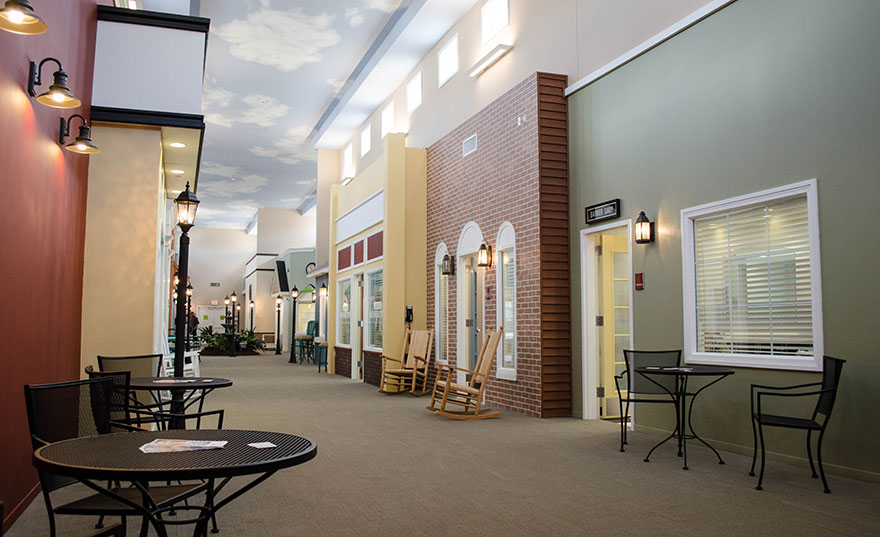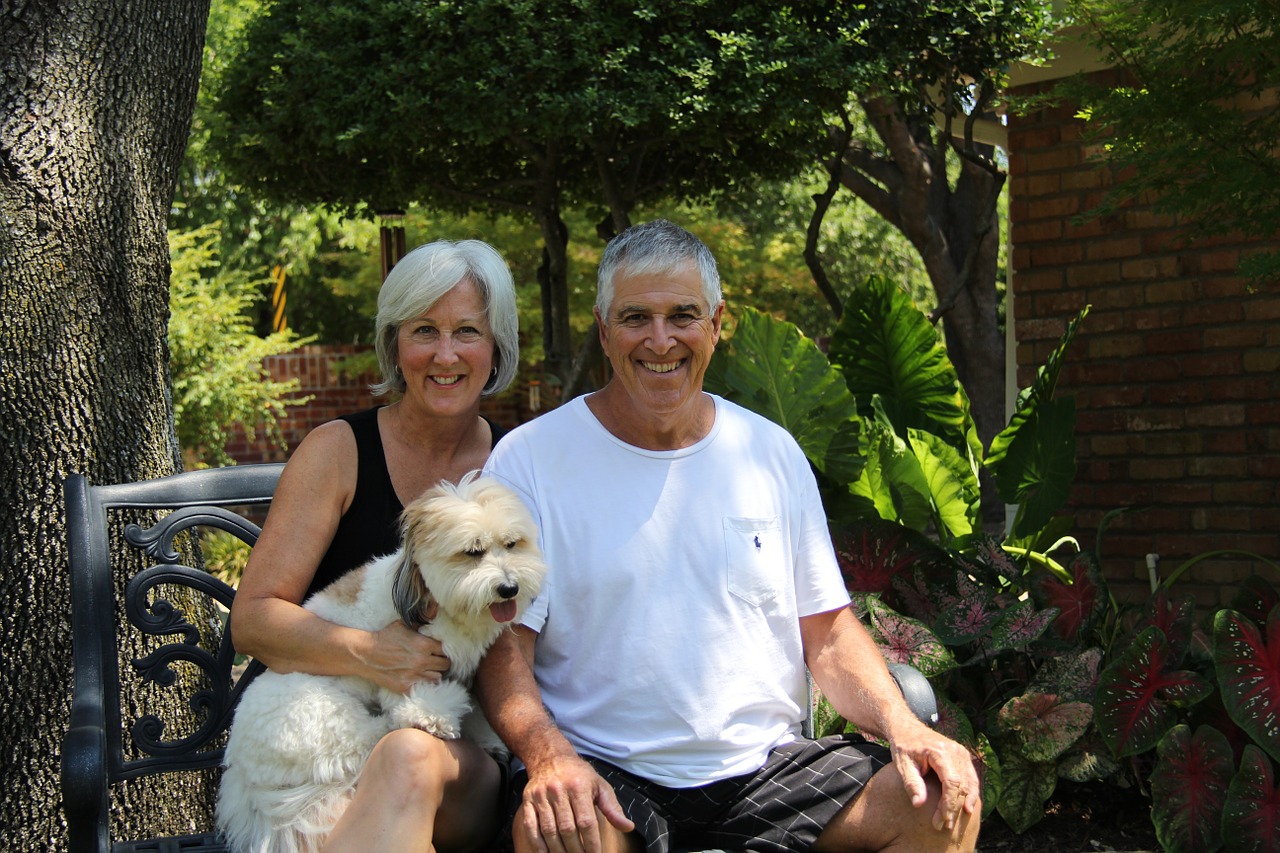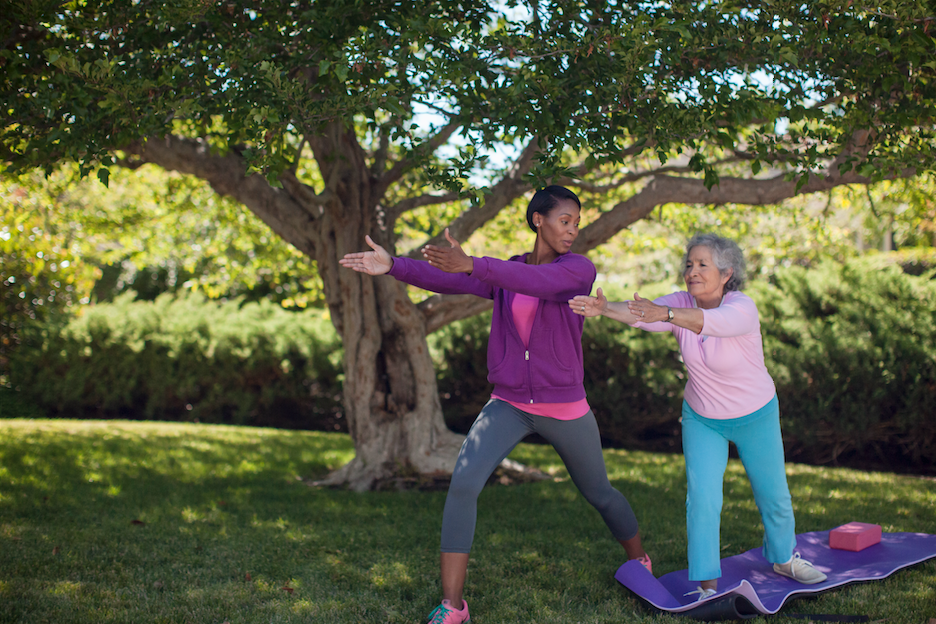Innovations in the Alzheimer’s Care Environment
Long-term brain health is influenced by more than one factor; everything from a healthy diet to the outside environment can help promote a healthy mind. These factors are also thought to potentially delay the progression of cognitive decline, which is why Jean Makesh is using this concept to reenvision memory care homes for older adults living with Alzheimer’s disease.
 Typically, memory care centers often feel like a hospital or hotel and fail to convey the hominess that can potentially alleviate anxiety. Jean Makesh is changing that by building care communities that are designed to resemble the warm environment of a familiar neighborhood from the 1930s and ‘40s.
Typically, memory care centers often feel like a hospital or hotel and fail to convey the hominess that can potentially alleviate anxiety. Jean Makesh is changing that by building care communities that are designed to resemble the warm environment of a familiar neighborhood from the 1930s and ‘40s.
Each facility contains indoor courtyards, streets and faux golf courses, along with venues such as a movie theatre, fitness center, spa, library and 24-hour bistro. Although everything is indoors to protect residents from wandering, the environment does not hold them back. Residents can enjoy sitting on their own front porch, which encourages socializing between neighbors.
Fiberoptic ceilings mimic the sunrise and sunset, and display twinkling stars at night, to aid residents with their wake and sleep schedules. At mealtimes, appetite-boosting aromas are dispersed throughout the facility. And if a resident were to become agitated, the anxiety-relieving aroma of frankincense (derived from the gummy sap from Boswellia and Commiphora trees) is introduced into their room.
As a former occupational therapist in the skilled nursing industry, Makesh is well-versed in helping individuals excel at basic activities of daily living. He has meticulously designed every aspect of the facilities to allow people with Alzheimer’s or dementia to function at their maximum potential, even going so far as to offer classes on daily living skills. Some clients have even learned to bathe and dress themselves again.
So far, there are three Lantern centers in Ohio, and each one reflects the community that surrounds it. Although this facility may not cure dementia, it provides a safe space for individuals to thrive, promoting independence, well-being and happiness. Makesh does have plans to expand in the future, and until then, we look forward to hearing more about the success of the residents in their day-to-day lives.
Sources
http://seniorplanet.org/an-innovation-in-memory-care-therapy-through-design/

 Due to the limitations of pharmacological approaches to dementia and other forms of cognitive decline, scientists are relying more on non-pharmacological treatment plans, such as cognitive therapy, as a way to help delay the onset and slow the progression of symptoms of cognitive decline. Non-pharmacological interventions are based on the concept of neuroplasticity, which is the brain’s ability to reorganize connections in the brain, create new connections and even create new neurons under some circumstances. Generally, neuroplasticity occurs in two instances: as a result of learning and experience or a result of damage to the brain.
Due to the limitations of pharmacological approaches to dementia and other forms of cognitive decline, scientists are relying more on non-pharmacological treatment plans, such as cognitive therapy, as a way to help delay the onset and slow the progression of symptoms of cognitive decline. Non-pharmacological interventions are based on the concept of neuroplasticity, which is the brain’s ability to reorganize connections in the brain, create new connections and even create new neurons under some circumstances. Generally, neuroplasticity occurs in two instances: as a result of learning and experience or a result of damage to the brain. Published in the journal Aging, Bredesen and his research team studied ten people who were experiencing age-related memory loss. Nine of the ten participants had genetic mutations in the APOE4 gene associated with Alzheimer’s disease, putting them at high risk. Participants used a technique called metabolic enhancement for neurodegeneration (MEND), a 36-point personalized regimen focused on a healthy diet, exercise routine, brain stimulation, sleep improvements, medication and vitamins for 5 months to 2 years.
Published in the journal Aging, Bredesen and his research team studied ten people who were experiencing age-related memory loss. Nine of the ten participants had genetic mutations in the APOE4 gene associated with Alzheimer’s disease, putting them at high risk. Participants used a technique called metabolic enhancement for neurodegeneration (MEND), a 36-point personalized regimen focused on a healthy diet, exercise routine, brain stimulation, sleep improvements, medication and vitamins for 5 months to 2 years. Researchers from Florida State University studied the effects of the workplace on cognitive function and found that an unstimulating or unkempt workplace negatively impacts memory and reasoning skills. The study, published in the Journal of Occupational and Environmental Medicine, expands on previous research examining the effects of one’s occupation on deficits in cognitive function later in their life.
Researchers from Florida State University studied the effects of the workplace on cognitive function and found that an unstimulating or unkempt workplace negatively impacts memory and reasoning skills. The study, published in the Journal of Occupational and Environmental Medicine, expands on previous research examining the effects of one’s occupation on deficits in cognitive function later in their life. A team of neuroscientists at the University of California in Los Angeles found that a three-month yoga and meditation course helped participants manage both the cognitive and emotional problems that arise prior to Alzheimer’s disease or other forms of dementia. The team found that participating in the yoga course was more effective than simply completing memory-enhancing exercises.
A team of neuroscientists at the University of California in Los Angeles found that a three-month yoga and meditation course helped participants manage both the cognitive and emotional problems that arise prior to Alzheimer’s disease or other forms of dementia. The team found that participating in the yoga course was more effective than simply completing memory-enhancing exercises.